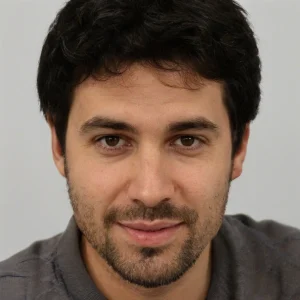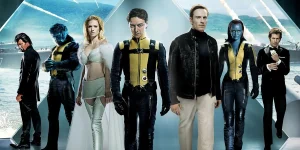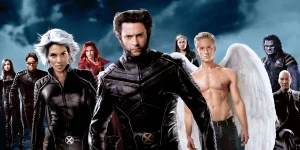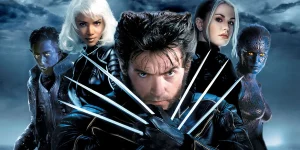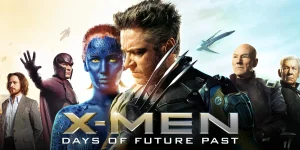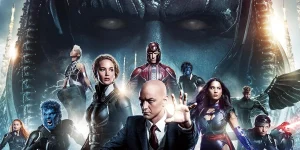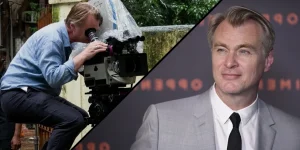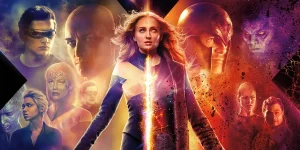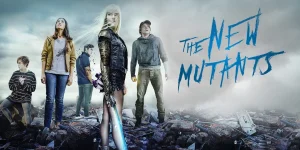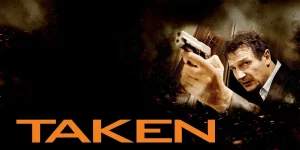The year 2000 marked a turning point for superhero cinema. Before the MCU juggernaut, before Christopher Nolan’s The Dark Knight Trilogy, there was X-Men, directed by Bryan Singer. It revitalized the comic book genre, introducing a darker, more serious tone while still embracing the spectacle of mutants and their powers. Let’s dive deep into the movie.
Table of Contents
ToggleDetailed Summary
Opening: The Holocaust and the Birth of Magneto
The film begins in 1944 at a Nazi concentration camp, where a young Erik Lehnsherr is separated from his parents. In his grief and rage, his mutant powers manifest as he bends metal gates apart. This tragic opening sets the stage for Magneto’s worldview: humanity fears and persecutes those who are different.
Introduction of the Mutants
Jumping to the present, we meet two central mutants:
- Rogue (Anna Paquin), a teenager who discovers her deadly power after kissing her boyfriend and nearly killing him.
- Wolverine (Hugh Jackman in his breakout role), a cage-fighting loner with claws, a healing factor, and a mysterious past.
Their paths cross when Rogue runs away from home and encounters Wolverine in Canada.
Xavier’s School and the Brotherhood
The pair are attacked by Magneto’s Brotherhood (including Mystique, Toad, and Sabretooth) but are saved by Storm and Cyclops, who bring them to Professor Charles Xavier’s mansion. Here we meet the X-Men—mutants fighting for peaceful coexistence with humanity.
Meanwhile, Magneto devises a plan to mutate world leaders using a machine powered by his abilities. He believes if humanity becomes mutant, persecution will end. But the device is unstable and deadly, potentially killing anyone subjected to it.
The Split in Ideologies
Xavier (Patrick Stewart) and Magneto (Ian McKellen) embody two opposing philosophies:
- Xavier believes in peaceful integration.
- Magneto believes mutants must fight for survival against inevitable human oppression.
This ideological conflict drives the film’s tension.
The Mission at Liberty Island
The Brotherhood kidnaps Rogue, intending to use her as a power conduit for Magneto’s machine, ensuring his survival while still activating the device. The X-Men launch a mission to save her.
Movie Ending
The climax takes place at Liberty Island, with Magneto planning to mutate the world leaders gathered at a United Nations summit using the Statue of Liberty as the focal point.
The X-Men infiltrate the island, engaging in battles:
- Cyclops and Storm fight Sabretooth and Toad.
- Mystique battles Wolverine in a shapeshifting fight, imitating him to sow confusion.
In the final confrontation, Wolverine climbs the Statue of Liberty to stop Magneto. Magneto immobilizes him with metal, so Wolverine signals Cyclops, who blasts Magneto away with his optic beams. The X-Men work together to free Rogue, who is weakened and near death from powering the machine.
Wolverine holds her hand, transferring his healing factor into her, saving her life but leaving himself near death. Rogue survives, Magneto is imprisoned in a plastic cell designed to neutralize his abilities, and the world remains unaware of how close it came to disaster.
The final scene is a quiet but tense chess game between Xavier and Magneto in the plastic prison. Magneto warns that humanity will inevitably turn on mutants, and Xavier insists that hope remains. The philosophical duel remains unresolved, setting the stage for future films.
Are There Post-Credits Scenes?
No. X-Men (2000) does not include a post-credits scene. At this time, superhero movies rarely used them. Marvel wouldn’t popularize the trend until Iron Man (2008).
Type of Movie
X-Men is a superhero science fiction action film with strong elements of political allegory. It explores discrimination, identity, and prejudice while delivering comic-book thrills.
Cast
- Hugh Jackman as Logan / Wolverine
- Patrick Stewart as Professor Charles Xavier
- Ian McKellen as Erik Lehnsherr / Magneto
- Halle Berry as Ororo Munroe / Storm
- Famke Janssen as Jean Grey
- James Marsden as Scott Summers / Cyclops
- Anna Paquin as Rogue
- Rebecca Romijn as Mystique
- Ray Park as Toad
- Tyler Mane as Sabretooth
- Bruce Davison as Senator Kelly
Film Music and Composer
The score was composed by Michael Kamen. It mixes orchestral grandeur with darker undertones, reflecting the movie’s blend of action and social commentary. While not as iconic as later superhero scores, it effectively underscores the film’s atmosphere.
Filming Locations
- Toronto, Canada served as the primary shooting location. Xavier’s School for Gifted Youngsters was filmed at Casa Loma, a famous Gothic Revival-style mansion.
- Hamilton, Ontario was used for industrial backdrops, including Magneto’s lair.
- The Statue of Liberty sequences were a mix of set pieces and visual effects shot in Toronto studios.
The use of Canadian locations gave the film its grounded, realistic look, in contrast to the stylized sets of 90s comic book films like Batman & Robin.
Awards and Nominations
- Nominated for Saturn Awards (Best Science Fiction Film, Best Director, Best Writing, Best Supporting Actress for Rebecca Romijn).
- Won Best Science Fiction Film at the Saturn Awards.
- Received recognition for its ensemble cast and visual effects, though it was overlooked by major awards.
Behind the Scenes Insights
- Hugh Jackman was a last-minute replacement for Dougray Scott, who was originally cast as Wolverine but had scheduling conflicts.
- Anna Paquin was only 17 when she filmed Rogue’s role.
- Bryan Singer instructed actors to study the civil rights movement to understand the film’s allegorical themes.
- The cast endured heavy prosthetics and makeup, particularly Rebecca Romijn, whose Mystique makeup took up to 9 hours to apply.
- Wolverine’s claws caused Jackman real injuries multiple times during filming.
Inspirations and References
The film is based on Marvel’s X-Men comics created by Stan Lee and Jack Kirby in 1963. The mutants’ struggles mirror historical and ongoing social issues:
- Professor X and Magneto are often compared to Martin Luther King Jr. and Malcolm X.
- The film specifically adapts elements from the “Magneto’s plan to mutate humans” storyline in the comics.
Alternate Endings and Deleted Scenes
- A deleted scene showed Senator Kelly surviving slightly longer, giving a more emotional farewell before his mutation killed him.
- Extended dialogue between Cyclops and Jean Grey gave more depth to their relationship.
- The ending originally had more exposition about Rogue’s recovery, but it was cut to quicken pacing.
Book Adaptations and Differences
The movie adapts elements from multiple X-Men comics but is not based on a single storyline. Differences from the comics include:
- Rogue is younger and positioned as the audience’s entry point into the mutant world, unlike her older, confident comic counterpart.
- Wolverine’s origin remains mysterious, with only vague hints.
- The Brotherhood team is streamlined compared to the comics, with fewer members.
Memorable Scenes and Quotes
Key Scenes
- Magneto bending the gates at the concentration camp.
- Wolverine’s cage fight introduction.
- The train station standoff, where Magneto manipulates dozens of police officers’ guns.
- The Statue of Liberty battle.
Iconic Quotes
- Magneto: “Are you a God-fearing man, Senator? That’s too bad.”
- Professor X: “Mutation: it is the key to our evolution.”
- Magneto: “We are the future, Charles, not them!”
- Wolverine: “You’re not part of the group yet, kid.”
Easter Eggs and Hidden Details
- The X-Men’s uniforms are leather instead of their comic-book spandex. Cyclops jokingly asks Wolverine if he’d prefer “yellow spandex,” a nod to Wolverine’s comic costume.
- Stan Lee makes a cameo as a hotdog vendor on the beach when Senator Kelly emerges from the ocean mutated.
- Cerebro, the mutant-detecting machine, is heavily inspired by the comics’ original design.
Trivia
- Hugh Jackman hadn’t read an X-Men comic before being cast.
- The film had a relatively modest budget ($75 million) compared to later superhero films.
- The success of X-Men is widely credited with reigniting Hollywood’s interest in comic book adaptations.
- Joss Whedon wrote an early draft of the script, and some of his dialogue (like the spandex joke) made it into the final film.
Why Watch?
X-Men is more than just a superhero movie. It’s a smart, character-driven story about outsiders, prejudice, and acceptance. It launched Hugh Jackman’s career, set the stage for the superhero boom of the 2000s, and remains a milestone in the genre.


